当前位置:网站首页>Hands on deep learning (38) -- realize RNN from scratch
Hands on deep learning (38) -- realize RNN from scratch
2022-07-04 09:37:00 【Stay a little star】
List of articles
【 explain 】: Here is the data of two books , They are all the data mentioned in Li Mu's God book . Because the code encapsulated by Mu Shen is loaded 《Time machine》, So I'm going to cover the first two Blog The code of is copied here again , Used to load 《 Star Wars: 》 Data sets . The following content is a reproduction of Mu Shen's curriculum and code . I will mark the knowledge points in yellow .
%matplotlib inline
import math
import torch
from torch import nn
from torch.nn import functional as F
from d2l import torch as d2l
import re
import collections
import random
1. Data loading and conversion
1.1 load Time machine This book
# Load data
batch_size,num_steps = 32,35
train_iter,vocab = d2l.load_data_time_machine(batch_size,num_steps)
# Encode each marked number independently
# The index for 0 and 2 The unique heat code of is as follows
F.one_hot(torch.tensor([0,2]),len(vocab))
tensor([[1, 0, 0, 0, 0, 0, 0, 0, 0, 0, 0, 0, 0, 0, 0, 0, 0, 0, 0, 0, 0, 0, 0, 0,
0, 0, 0, 0],
[0, 0, 1, 0, 0, 0, 0, 0, 0, 0, 0, 0, 0, 0, 0, 0, 0, 0, 0, 0, 0, 0, 0, 0,
0, 0, 0, 0]])
The small batch shape we sample each time is ( Batch size , Time steps ).one_hot Coding converts such small batches into three-dimensional tensors , The last dimension is equal to the size of the vocabulary (len(vocab)). We often replace the input dimension , In order to obtain the shape ( Time steps , Batch size , Vocabulary size ) Output . This will make it easier for us to pass through the outermost dimension , Update the hidden status of small batches step by step .( Imagine the data on each time step when we train later , The transposed data is convenient for us python The read , It has certain computational acceleration effect )
X = torch.arange(10).reshape((2, 5))
F.one_hot(X.T, 28).shape
torch.Size([5, 2, 28])
1.2 Read 《 Star Wars: 》 Book data set
Manually modify the previous code a little . For convenience of viewing, there is no encapsulation
def read_book(dir):
""" The pretreatment operation here is violent , Eliminate punctuation marks and special characters , There's only... Left 26 Letters and spaces """
with open(dir,'r') as f:
lines = f.readlines()
return [re.sub('[^A-Za-z]+',' ',line).strip().lower() for line in lines]
def tokenize(lines,token='word'):
if token=="word":
return [line.split() for line in lines]
elif token =="char":
return [list(line) for line in lines]
else:
print("Error: Unknown token type :"+token)
lines = read_book('./data/RNN/36-0.txt')
def count_corpus(tokens):
""" Count the frequency of tags : there tokens yes 1D List or 2D list """
if len(tokens) ==0 or isinstance(tokens[0],list):
# take tokens Flatten into a list filled with tags
tokens = [token for line in tokens for token in line]
return collections.Counter(tokens)
class Vocab:
""" Build a text vocabulary """
def __init__(self,tokens=None,min_freq=0,reserved_tokens=None):
if tokens is None:
tokens=[]
if reserved_tokens is None:
reserved_tokens = []
# Sort according to frequency
counter = count_corpus(tokens)
self.token_freqs = sorted(counter.items(),key=lambda x:x[1],reverse=True)
# Index of unknown tag is 0
self.unk , uniq_tokens = 0, ['<unk>']+reserved_tokens
uniq_tokens += [token for token,freq in self.token_freqs
if freq >= min_freq and token not in uniq_tokens]
self.idx_to_token,self.token_to_idx = [],dict() # Find the tag according to the index and find the index according to the tag
for token in uniq_tokens:
self.idx_to_token.append(token)
self.token_to_idx[token] = len(self.idx_to_token)-1
def __len__(self):
return len(self.idx_to_token)
def __getitem__(self,tokens):
""" Switch to one by one item For the output """
if not isinstance(tokens,(list,tuple)):
return self.token_to_idx.get(tokens,self.unk)
return [self.__getitem__(token) for token in tokens]
def to_tokens(self,indices):
""" If it is a single index Direct output , If it is list perhaps tuple Iterative output """
if not isinstance(indices,(list,tuple)):
return self.idx_to_token[indices]
return [self.idx_to_token[index] for index in indices]
def load_corpus_book(max_tokens=-1):
""" return book Tag index list and glossary in dataset """
lines = read_book('./data/RNN/36-0.txt')
tokens = tokenize(lines,'char')
vocab = Vocab(tokens)
# Because every text line in the dataset , Not necessarily a sentence or paragraph
# So flatten all text lines into a list
corpus = [vocab[token] for line in tokens for token in line]
if max_tokens >0:
corpus = corpus[:max_tokens]
return corpus,vocab
def seq_data_iter_random(corpus,batch_size,num_steps):
""" Use random sampling to generate a small batch of quantum sequences """
# The sequence is partitioned from a random offset , The random range includes `num_steps - 1`
corpus = corpus[random.randint(0, num_steps - 1):]
# subtract 1, Because we need to consider labels
num_subseqs = (len(corpus) - 1) // num_steps
# The length is `num_steps` The starting index of the subsequence of
initial_indices = list(range(0, num_subseqs * num_steps, num_steps))
# In the iterative process of random sampling ,
# From two adjacent 、 Random 、 Subsequences in a small batch are not necessarily adjacent to the original sequence
random.shuffle(initial_indices)
def data(pos):
# Return from `pos` The length at the beginning of the position is `num_steps` Sequence
return corpus[pos:pos + num_steps]
num_batches = num_subseqs // batch_size
for i in range(0, batch_size * num_batches, batch_size):
# ad locum ,`initial_indices` Random start index containing subsequences
initial_indices_per_batch = initial_indices[i:i + batch_size]
X = [data(j) for j in initial_indices_per_batch]
Y = [data(j + 1) for j in initial_indices_per_batch]
yield torch.tensor(X), torch.tensor(Y)
def seq_data_iter_sequential(corpus,batch_size,num_steps):
""" Use sequential partitioning to generate a small batch of quantum sequences """
# Divide the sequence from the random offset
offset = random.randint(0,num_steps)
num_tokens = ((len(corpus)- offset -1)//batch_size)*batch_size
Xs = torch.tensor(corpus[offset:offset+num_tokens])
Ys = torch.tensor(corpus[offset+1:offset+num_tokens+1])
Xs,Ys = Xs.reshape(batch_size,-1),Ys.reshape(batch_size,-1)
num_batches = Xs.shape[1]//num_steps
for i in range(0,num_steps*num_batches,num_steps):
X = Xs[:,i:i+num_steps]
Y = Ys[:,i:i+num_steps]
yield X,Y
class SeqDataLoader: #@save
""" An iterator that loads sequence data ."""
def __init__(self, batch_size, num_steps, use_random_iter, max_tokens):
if use_random_iter:
self.data_iter_fn = seq_data_iter_random
else:
self.data_iter_fn = seq_data_iter_sequential
self.corpus, self.vocab = load_corpus_book(max_tokens)
self.batch_size, self.num_steps = batch_size, num_steps
def __iter__(self):
return self.data_iter_fn(self.corpus, self.batch_size, self.num_steps)
# Defined function load_data_book Return both data iterators and vocabularies
def load_data_book(batch_size, num_steps, #@save
use_random_iter=False, max_tokens=10000):
""" Returns the iterator and vocabulary of the time machine dataset ."""
data_iter = SeqDataLoader(batch_size, num_steps, use_random_iter,max_tokens)
return data_iter, data_iter.vocab
# Load data
batch_size,num_steps = 32,35
train_iter,vocab = load_data_book(batch_size,num_steps)
2. Initialize model parameters
num_hiddens Is an adjustable super parameter , When training the network model , The input and output come from the same Thesaurus , So it has the same dimension , Equal to the size of the vocabulary
def get_params(vocab_size,num_hiddens,device):
num_inputs = num_outputs = vocab_size
def normal(shape):
return torch.randn(size=shape,device=device)*0.01
# Parameters of hidden layer
W_xh = normal((num_inputs,num_hiddens)) # Map input to hidden layers
W_hh = normal((num_hiddens,num_hiddens)) # Hidden variables from the previous time to the next time
b_h = torch.zeros(num_hiddens,device=device) # For every hidden variable bias
# Output layer
W_hq = normal((num_hiddens,num_outputs)) # Hide variables to output
b_q = torch.zeros(num_outputs,device=device)
# Additional gradient
params = [W_xh,W_hh,b_h,W_hq,b_q]
for param in params:
param.requires_grad_(True)
return params
3. Cyclic neural network model
In order to define the cyclic neural network model , We first need a function to return the hidden state during initialization . It returns a tensor , All use 0 fill , Its shape is ( Batch size , Number of hidden units ). Using tuples makes it easier to deal with situations where hidden states contain multiple variables .
def init_rnn_state(batch_size,num_hiddens,device):
return (torch.zeros((batch_size,num_hiddens),device=device),)
Use rnn The function defines how to calculate the hidden state and output in a time step . Please note that , The recurrent neural network model passes through the outermost dimension inputs loop , In order to update the hidden status of small batches step by step H. Activate function using tanh function . As described in the chapter of multi-layer perceptron , When elements are evenly distributed over real numbers ,tanh The average value of is 0
def rnn(inputs, state, params):
# `inputs` The shape of the :(` Number of time steps `, ` Batch size `, ` Vocabulary size `)
W_xh, W_hh, b_h, W_hq, b_q = params
H, = state # H Is the hidden state of the previous moment
outputs = []
# `X` The shape of the :(` Batch size `, ` Vocabulary size `)
for X in inputs:
""" Traverse the data in chronological order """
H = torch.tanh(torch.mm(X, W_xh) + torch.mm(H, W_hh) + b_h)
Y = torch.mm(H, W_hq) + b_q
outputs.append(Y)
return torch.cat(outputs, dim=0), (H,)
# Integrate all the above functions with one class , And store RNN Model parameters of
class RNNModelScratch: #@save
""" A recurrent neural network model implemented from scratch """
def __init__(self, vocab_size, num_hiddens, device, get_params,
init_state, forward_fn):
self.vocab_size, self.num_hiddens = vocab_size, num_hiddens
self.params = get_params(vocab_size, num_hiddens, device)
self.init_state, self.forward_fn = init_state, forward_fn
def __call__(self, X, state):
X = F.one_hot(X.T, self.vocab_size).type(torch.float32)
return self.forward_fn(X, state, self.params)
def begin_state(self, batch_size, device):
return self.init_state(batch_size, self.num_hiddens, device)
# Check whether the output shape is correct , Ensure that the dimension of the hidden state remains unchanged
num_hiddens = 512
net = RNNModelScratch(len(vocab),num_hiddens,d2l.try_gpu(),get_params,init_rnn_state,rnn)
state = net.begin_state(X.shape[0],d2l.try_gpu())
Y,new_state = net(X.to(d2l.try_gpu()),state)
Y.shape, len(new_state), new_state[0].shape
(torch.Size([10, 28]), 1, torch.Size([2, 512]))
The output shape is ( Time steps * Batch size , Vocabulary size ), The shape of the hidden state remains unchanged , namely ( Batch size , Number of hidden units )
4. forecast
Define prediction functions to generate user provided prefix New characters after ,prefix Is a string containing multiple characters . stay prefix When you loop through these starting characters , Constantly pass the hidden state to the next time step , Without generating any output .
This is known as " Preheat period "(warm-up), During this period, the model will update itself ( for example , Update hidden status ), But no prediction .
After the forecast period , The hidden state is better than the initial value .
def predict(prefix,num_preds,net,vocab,device):
""" stay prefix New characters are generated later """
state = net.begin_state(batch_size=1,device=device)
outputs = [vocab[prefix[0]]]
get_input = lambda: torch.tensor([outputs[-1]], device=device).reshape((1, 1))
for y in prefix[1:]: # Preheat period
_,state = net(get_input(),state)
outputs.append(vocab[y])
for _ in range(num_preds): # Conduct `num_preds` Next step prediction
y,state = net(get_input(),state)
outputs.append(int(y.argmax(dim=1).reshape(1)))
return "".join([vocab.idx_to_token[i] for i in outputs])
predict('time traveller ', 10, net, vocab, d2l.try_gpu())
'time traveller awmjvgtmjv'
5. Gradient cut
For length is T T T Sequence , We calculate these in iterations T T T Gradient over time steps , Thus, a length of O ( T ) \mathcal{O}(T) O(T) Matrix multiplication chain . When T T T large , It may cause numerical instability , For example, the gradient may explode or disappear . therefore , Recurrent neural network models often need additional help to stabilize training .
Generally speaking , When solving optimization problems , We take steps to update the model parameters , For example, in vector form x \mathbf{x} x in , Negative gradient in small batches g \mathbf{g} g In the direction of . for example , Use η > 0 \eta > 0 η>0 As a learning rate , In an iteration , We will x \mathbf{x} x Updated to x − η g \mathbf{x} - \eta \mathbf{g} x−ηg. Let's further assume that the objective function f f f To perform well , for example , Liebhiz continuous (Lipschitz continuous) constant L L L. in other words , For any x \mathbf{x} x and y \mathbf{y} y We have :
∣ f ( x ) − f ( y ) ∣ ≤ L ∥ x − y ∥ . |f(\mathbf{x}) - f(\mathbf{y})| \leq L \|\mathbf{x} - \mathbf{y}\|. ∣f(x)−f(y)∣≤L∥x−y∥.
under these circumstances , We can reasonably assume that , If we pass the parameter vector η g \eta \mathbf{g} ηg to update , that :
∣ f ( x ) − f ( x − η g ) ∣ ≤ L η ∥ g ∥ , |f(\mathbf{x}) - f(\mathbf{x} - \eta\mathbf{g})| \leq L \eta\|\mathbf{g}\|, ∣f(x)−f(x−ηg)∣≤Lη∥g∥,
This means that we will not observe more than L η ∥ g ∥ L \eta \|\mathbf{g}\| Lη∥g∥ The change of . This is both a curse and a blessing . On the cursed side , It limits the speed of progress ; And on the blessing side , It limits if we move in the wrong direction , The extent to which things can go wrong .
Sometimes the gradient can be very large , The optimization algorithm may not converge . We can reduce η \eta η Learning rate to solve this problem . But what if we rarely get large gradients ? under these circumstances , This seems totally groundless . A popular alternative is by incorporating gradients g \mathbf{g} g Project back to the ball of a given radius ( for example θ \theta θ) To crop the gradient g \mathbf{g} g. As follows :
g ← min ( 1 , θ ∥ g ∥ ) g . \mathbf{g} \leftarrow \min\left(1, \frac{\theta}{\|\mathbf{g}\|}\right) \mathbf{g}. g←min(1,∥g∥θ)g.
By doing so , We know that the gradient norm will never exceed θ \theta θ, And the updated gradient is completely consistent with g \mathbf{g} g Align with the original direction of the . It also has an ideal side effect , That is, limit any given small batch ( And any given sample ) Effect on parameter vector . This gives the model a certain degree of robustness . Gradient clipping provides a fast way to repair gradient explosion . Although it doesn't completely solve the problem , But it is one of many technologies to alleviate the problem .
Next, we define a function to trim the model implemented from scratch or by advanced API Gradient of the constructed model . Also pay attention to , We calculate the gradient norm of all model parameters .
def grad_clipping(net, theta): #@save
""" Clipping gradient ."""
if isinstance(net, nn.Module):
params = [p for p in net.parameters() if p.requires_grad]
else:
params = net.params
norm = torch.sqrt(sum(torch.sum((p.grad**2)) for p in params))
if norm > theta:
for param in params:
param.grad[:] *= theta / norm
6. Training
Before training the model , Let's define a function to train a model with only one iteration cycle . It trains with us softmax The way of regression model has three differences :
- Different sampling methods for sequential data ( Random sampling and sequential partitioning ) Will result in differences in hidden state initialization .
- We crop the gradient before updating the model parameters . This ensures that even at some point in the training process, the gradient explodes , The model does not diverge .
- We use the degree of confusion to evaluate the model . It ensures the comparability of sequences with different lengths .
To be specific , When using sequential partitions , We only initialize the hidden state at the beginning of each iteration cycle . Due to the next small batch i t h i^\mathrm{th} ith Subsequence samples and current i t h i^\mathrm{th} ith Subsequence samples are adjacent , Therefore, the hidden state at the end of the current small batch will be used to initialize the hidden state at the beginning of the next small batch . such , The sequence history information stored in the hidden state can flow through adjacent subsequences in an iteration cycle . However , Any hidden state calculation depends on all the previous small batches in the same iteration cycle , This makes the gradient calculation complex . In order to reduce the amount of calculation , We separate the gradient before processing any small batch , The gradient calculation of hidden state is always limited to a small batch of time steps .
When using random sampling , We need to reinitialize the hidden state for each iteration cycle , Because each sample is sampled at a random location .
def train_epoch(net, train_iter, loss, updater, device, use_random_iter):
""" The training model has an iterative cycle ."""
state, timer = None, d2l.Timer()
metric = d2l.Accumulator(2) # The sum of training losses , Number of tags
for X, Y in train_iter:
if state is None or use_random_iter:
# Initialize at the first iteration or when random sampling is used `state`
state = net.begin_state(batch_size=X.shape[0], device=device)
else:
if isinstance(net, nn.Module) and not isinstance(state, tuple):
# `state` about `nn.GRU` It's a tensor
state.detach_()
else:
# `state` about `nn.LSTM` Or for the model we implemented from scratch, it's a tensor
for s in state:
s.detach_()
y = Y.T.reshape(-1)
X, y = X.to(device), y.to(device)
y_hat, state = net(X, state)
l = loss(y_hat, y.long()).mean()
if isinstance(updater, torch.optim.Optimizer):
updater.zero_grad()
l.backward()
grad_clipping(net, 1)
updater.step()
else:
l.backward()
grad_clipping(net, 1)
# Because... Has been called `mean` function
updater(batch_size=1)
metric.add(l * y.numel(), y.numel())
return math.exp(metric[0] / metric[1]), metric[1] / timer.stop()
#@save
def train(net, train_iter, vocab, lr, num_epochs, device,use_random_iter=False):
""" Training models """
loss = nn.CrossEntropyLoss()
animator = d2l.Animator(xlabel='epoch', ylabel='perplexity',
legend=['train'], xlim=[10, num_epochs])
# initialization
if isinstance(net, nn.Module):
updater = torch.optim.SGD(net.parameters(), lr)
else:
updater = lambda batch_size: d2l.sgd(net.params, lr, batch_size)
predict_train = lambda prefix: predict(prefix, 50, net, vocab, device)
# Training and forecasting
for epoch in range(num_epochs):
ppl, speed = train_epoch(net, train_iter, loss, updater, device,
use_random_iter)
if (epoch + 1) % 10 == 0:
print(predict_train('time traveller'))
animator.add(epoch + 1, [ppl])
print(f' Confusion {
ppl:.1f}, {
speed:.1f} Mark / second {
str(device)}')
print(predict_train('the planet mars i scarcely'))
print(predict_train('scarcely'))
Now we can train the recurrent neural network model . Because we only use 10000 A sign , So the model needs more iteration cycles to converge better .
num_epochs, lr = 500, 1
train(net, train_iter, vocab, lr, num_epochs, d2l.try_gpu())
Confusion 1.0, 172140.2 Mark / second cuda:0
the planet mars i scarcely need remind the reader revolves about thesun at a
scarcely ore seventh ofthe volume of the earth must have a

Last , Let's check the results of using random sampling .
train(net, train_iter, vocab, lr, num_epochs, d2l.try_gpu(),use_random_iter=True)
Confusion 1.4, 172089.0 Mark / second cuda:0
<unk>he planet <unk>ars<unk> <unk> scarcely one seventh ofthe volume of the earth must have a
scarcely one seventh ofthe volume of the earth must have a

Summary
- We can train a character level language model based on recurrent neural network , Generate text according to the text prefix provided by the user .
- A simple recurrent neural network language model includes input coding 、 Cyclic neural network model and output generation .
- The recurrent neural network model needs state initialization to train , Although random sampling and sequential division use different methods .
- When using sequential partitioning , We need to separate the gradient to reduce the amount of calculation .
- The warm-up period allows the model to update itself before making any predictions ( for example , Get a better hidden state than the initial value ).
- Gradient clipping can prevent gradient explosion , But it can't cope with the disappearance of the gradient .
practice
- It shows that exclusive coding is equivalent to selecting different embedding for each object .
- By adjusting the super parameters ( Such as the number of iteration cycles 、 Number of hidden units 、 Time steps of small batch 、 Learning rate, etc ) To improve confusion .
- How low can you lower ?
- Replace the hot code with learnable embedding . Will this lead to better performance ?
- How does it work in other books , for example Star Wars: ?
- Modify the prediction function , For example, use sampling , Instead of choosing the most likely next character .
- What's going to happen ?
- Bias the model towards more likely outputs , for example , from q ( x t ∣ x t − 1 , … , x 1 ) ∝ P ( x t ∣ x t − 1 , … , x 1 ) α q(x_t \mid x_{t-1}, \ldots, x_1) \propto P(x_t \mid x_{t-1}, \ldots, x_1)^\alpha q(xt∣xt−1,…,x1)∝P(xt∣xt−1,…,x1)α Mid extraction α > 1 \alpha > 1 α>1.
- Run the code in this section without clipping the gradient . What will happen ?
- Change the order division , Make it not separate the hidden state from the calculation diagram . Is there any change in the running time ? How confused is it ?
- use ReLU Replace the activation function used in this section , And repeat the experiment in this section . Do we still need gradient clipping ? Why? ?
边栏推荐
- Pueue data migration from '0.4.0' to '0.5.0' versions
- MySQL transaction mvcc principle
- Lauchpad X | 模式
- Four common methods of copying object attributes (summarize the highest efficiency)
- Log cannot be recorded after log4net is deployed to the server
- Launpad | 基礎知識
- Daughter love in lunch box
- Write a jison parser from scratch (2/10): learn the correct posture of the parser generator parser generator
- Report on investment analysis and prospect trend prediction of China's MOCVD industry Ⓤ 2022 ~ 2028
- Logstack configuration details -- elasticstack (elk) work notes 020
猜你喜欢
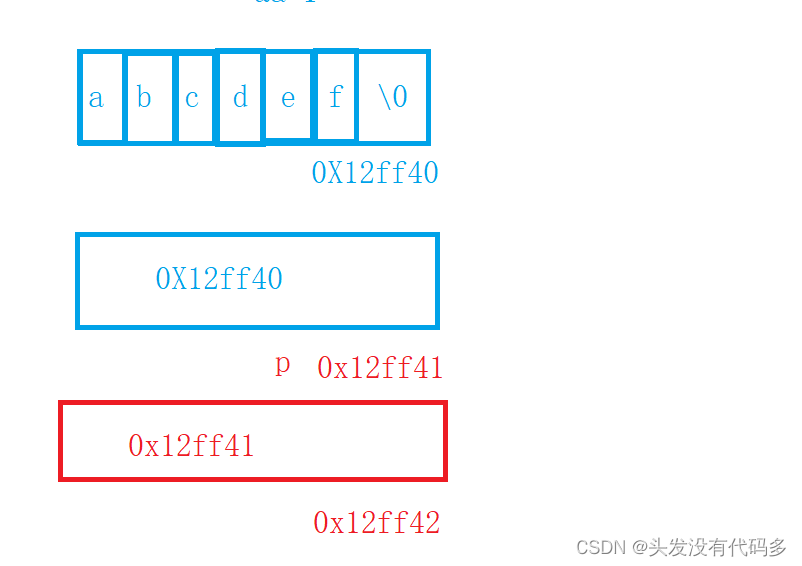
C语言指针经典面试题——第一弹
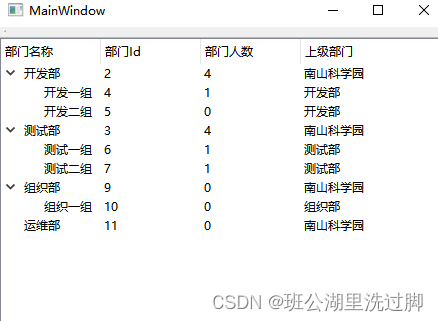
QTreeView+自定义Model实现示例

2022-2028 global special starch industry research and trend analysis report

HMS core helps baby bus show high-quality children's digital content to global developers
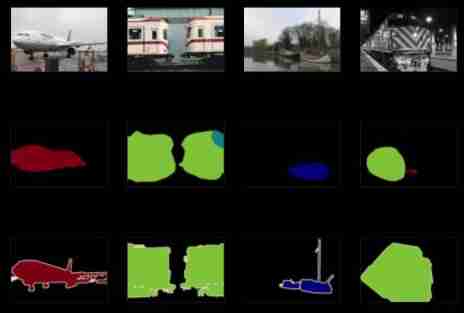
Hands on deep learning (32) -- fully connected convolutional neural network FCN
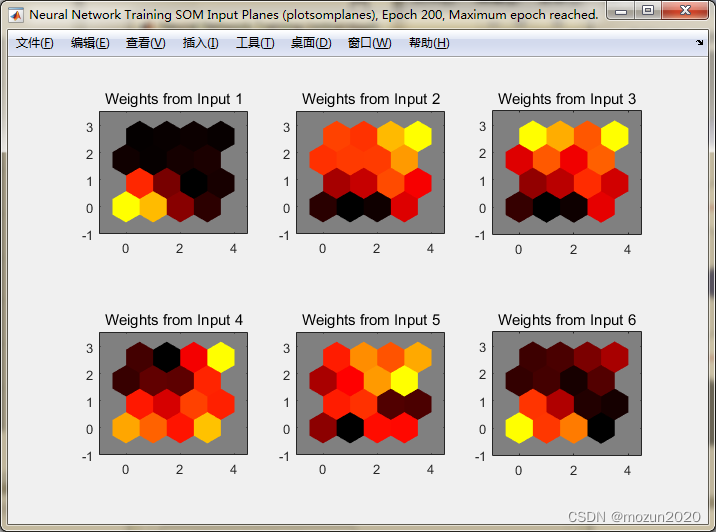
MATLAB小技巧(25)竞争神经网络与SOM神经网络
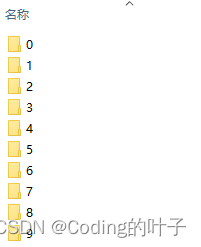
mmclassification 标注文件生成
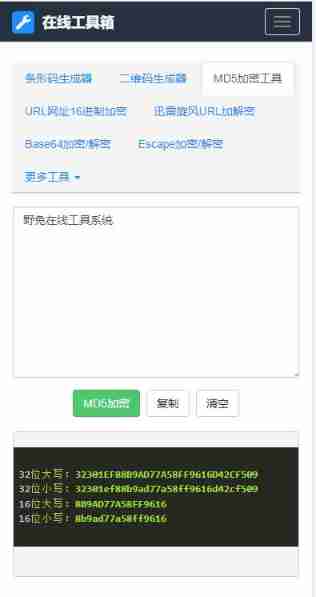
165 webmaster online toolbox website source code / hare online tool system v2.2.7 Chinese version

2022-2028 global gasket metal plate heat exchanger industry research and trend analysis report
![Reload CUDA and cudnn (for tensorflow and pytorch) [personal sorting summary]](/img/3f/a71b56a62d2a0d64749a6af05384f5.jpg)
Reload CUDA and cudnn (for tensorflow and pytorch) [personal sorting summary]
随机推荐
2022-2028 global protein confectionery industry research and trend analysis report
2022-2028 global tensile strain sensor industry research and trend analysis report
How to display √ 2 on the command line terminal ̅? This is actually a blog's Unicode test article
JDBC and MySQL database
Launchpad x | mode
Write a jison parser (7/10) from scratch: the iterative development process of the parser generator 'parser generator'
libmysqlclient.so.20: cannot open shared object file: No such file or directory
Get the source code in the mask with the help of shims
Write a mobile date selector component by yourself
Golang Modules
Reading notes on how to connect the network - tcp/ip connection (II)
MySQL transaction mvcc principle
《网络是怎么样连接的》读书笔记 - Tcp/IP连接(二)
AMLOGIC gsensor debugging
HMS core helps baby bus show high-quality children's digital content to global developers
H5 audio tag custom style modification and adding playback control events
Launpad | Basics
Hands on deep learning (32) -- fully connected convolutional neural network FCN
Research Report on the development trend and Prospect of global and Chinese zinc antimonide market Ⓚ 2022 ~ 2027
pcl::fromROSMsg报警告Failed to find match for field ‘intensity‘.